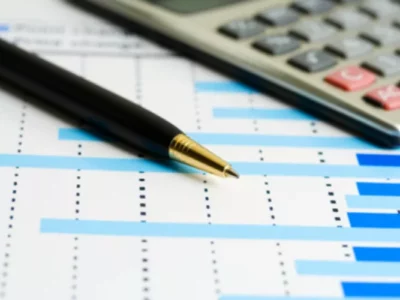Content

The value of managerial and executive talent can be challenging but essential to a company’s goodwill. Goodwill is an essential asset in accounting that has been used for many years. Calculate the adjustments by simply taking the difference between the fair value and the book value of each asset. Practitioner goodwill refers to goodwill in regard to a specific line of business that is practiced, similar to practice goodwill. But this type of goodwill is focused specifically on the skills, knowledge, and talent of the practitioners. Businesses must record goodwill as a requirement of the Generally Accepted Accounting Principles, or GAAP, which is set by the Financial Accounting Standards Board (FASB).
- It is that amount of the purchase price over and above the amount of the fair market value of the target company’s assets minus its liabilities.
- If you’re a first-time seller, you may be mystified when you hear prospective buyers talk about goodwill.
- Ultimately, the value of a company’s goodwill lies in the eye of its acquirer.
- Calculating how much you owe is complex; just know that selling physical assets you’ve previously depreciated is going to hike your tax bill, especially if you wrote the value off completely over the years.
In addition, Goodwill must be evaluated annually for impairment, and only private companies may choose to amortize it over ten years. In financial modeling for mergers and acquisitions (M&A), it’s important to accurately reflect the value of goodwill in order for the total financial model to be accurate. Below is a screenshot of how an analyst would perform the analysis required to calculate the values that go on the balance sheet. Under US GAAP and IFRS Standards, goodwill is an intangible asset with an indefinite life and thus does not need to be amortized. However, it needs to be evaluated for impairment yearly, and only private companies may elect to amortize goodwill over a 10-year period. Goodwill can be divided into different types, based on what was acquired and how it was acquired.
What is goodwill in accounting in one sentence?
Purchased goodwill is when a business is bought for a price greater than the fair market value of its net assets. In contrast, inherent type represents a company’s unquantifiable value, like customer & employee relationships, brand name, etc. Goodwill, in accounting, is an intangible asset created when one firm acquires another at a cost more than the total fair value of the acquired firm’s identifiable net assets. This difference between what was paid and what those assets are worth is known as goodwill.
However, entities are required to conduct impairment review of goodwill on regular basis without waiting for indicators of impairment. After the recognition of goodwill acquired under purchase deal, the new entity may work even better than original entity and may induce if goodwill needs revaluation increase. As subsequent increase is just an increase in internal goodwill and not the purchased goodwill.
Inherent Goodwill
It can also be broken down based on industry and can be referred to as business goodwill, practitioner goodwill, or practice goodwill. The $2 million, that was over and above the fair value of the identifiable assets minus the liabilities, must have been for something else. Because goodwill is so difficult to price, it can be very difficult to complete a goodwill calculation, particularly if you don’t have access to all the necessary data. It’s also important to note that negative goodwill is a possibility for any acquisition, occurring when the target company will not negotiate a fair price.
A company’s relationships with suppliers and other stakeholders also affect the value of goodwill. Strong supplier relationships can lead to more efficient supply chains, cost savings, and higher profitability, all of which contribute to higher goodwill value. Companies with significant goodwill on their balance sheet may be difficult to compare with those with relatively low goodwill value. This may lead to difficulties in financial analysis and decision-making. Licenses and permits are required for businesses to operate legally in specific industries. These can include licenses to sell alcohol, run a restaurant, or practice certain professions.
Company
With all of your calculations completed, you can now calculate goodwill. This is done by subtracting the fair market value adjustment in Step 3 from the excess purchase price. For example, if your excess purchase price is $400,000 and your fair value adjustment is $100,000, your goodwill amount would be $300,000. Goodwill accounting involves a series of simple calculations to determine exactly how much goodwill will need to be recorded. Entering this information into your accounting software promptly after purchasing another business will help to ensure that your financial statements are accurate while reflecting the correct amount of goodwill. Goodwill accounting is most frequently used in the business valuation process when acquiring another business.

As goodwill evaluation is tricky, it would be difficult for you to know goodwill treatment in balance sheet if you do not have the needed data. This can occur when a target company does not want to negotiate a fair purchase price. In this article, we will explore the concept of goodwill from an accounting perspective and examine its role as an intangible asset. We will look at how it is measured, how it is accounted for on a company’s balance sheet, and the implications of having goodwill on a company’s financial statements. We will also discuss the relationship between goodwill and other intangible assets and how it differs from tangible assets.
Goodwill
“Impairment” refers to the fluctuations in a business’s fair market value. Since the value of goodwill can change due to circumstances, such as a change in customer base or reputation, it must be reflected correctly and reported accurately. Businesses are required to review this annually, as well as when a business is first acquired, per the FASB.
- A company with a well-established, recognizable brand name will likely have higher goodwill value than a less-known or generic brand name.
- Trade secrets can be complex to value but significant to a company’s goodwill.
- It cannot be sold or transferred separately from the business as a whole.
- This improves the company’s financial stability and generates revenue and profits, even during tough times.
- In absence of reliable measurement, it cannot be recognized in the statement of financial position.
Goodwill is usually denoted as intangible assets on an acquirers balance sheet, and it is filed under the long-term assets account. Goodwill is generally called an intangible asset since it isn’t a physical assets unlike machineries and buildings. Goodwill is an intangible asset https://www.bookstime.com/articles/goodwill (an asset that’s non-physical but offers long-term value) which arises when another company acquires a new business. Goodwill refers to the purchase cost, minus the fair market value of the tangible assets, the liabilities, and the intangible assets that you’re able to identify.
Complete goodwill calculation
When the profit of the firm is rising, the value of goodwill also rises. Company A wants to acquire Company B. The agreed consideration payment is $2,000,000. The fair value of minority and equity interest is $100,000 and $150,000, respectively. First, as stated in the transaction contract, ascertain the consideration paid by the purchaser to the seller. The purchaser can use shares, cash, or payment-in-kind to pay the consideration.

Negative goodwill is usually seen in distressed sales and is recorded as income on the acquirer’s income statement. There are competing approaches among accountants to calculating goodwill. One reason for this is that goodwill involves factoring in estimates of future cash flows and other considerations that are not known at the time of the acquisition. Such gain is recorded immediately in the profit and loss account of the buyer just like any other gain or income in the period of acquisition. Even though goodwill is technically considered an asset, it is not always reported on the balance sheet.
Shown on the balance sheet, goodwill is an intangible asset that is created when one company acquires another company for a price greater than its net asset value. Unlike other assets that have a discernible useful life, goodwill is not amortized or depreciated but is instead periodically tested for goodwill impairment. If the goodwill is thought to be impaired, the value of goodwill must be written off, reducing the company’s earnings.
In turn, earnings per share (EPS) and the company’s stock price are also negatively affected. The value of a company’s name, brand reputation, loyal customer base, solid customer service, good employee relations, and proprietary technology represent aspects of goodwill. In this situation purchaser has bought the entity for a price even lesser than the net fair value of its assets. This is effectively https://www.bookstime.com/ a gain on acquisition or discount on purchase as buyer has paid lesser than what it should have. Goodwill can also be a source of competitive advantage for a company, as it can lead to customer loyalty and a stronger market position. However, it is important to note that goodwill can also be lost, for example if a company experiences a scandal or fails to meet customer expectations.
Difference Between Intangible Assets and Goodwill
This simply refers to the process where a company wishes to purchase another company and turn it into of its own. The amount which the acquirer will pay for the target firm over the fair value of the target value is what usually makes up the targets goodwill. If the acquirer more than it is supposed ton pay for the target company, then it will be registered as positive goodwill. On the other hand, negative goodwill arises when the acquirer pays less than the book value (fair market value) of the target firm. Negative goodwill actually occurs when the target firm is purchased in distress, that is when the target firm is sold due to a number of unfavorable events.
- If the acquisition cost is the same or less than the value of net assets, the company does not enjoy monetizable goodwill.
- If the acquirer more than it is supposed ton pay for the target company, then it will be registered as positive goodwill.
- It is quite easy to calculate goodwill in theory, but the practical aspect is quite complicated.
- Other intangible assets are sold separately, and their values can be transferred to another party.
- It is considered an intangible asset because it cannot be seen, touched or held and it does not have a physical form.

